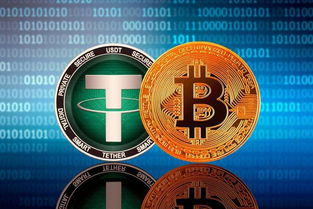Introduction to Stablecoins: The Future of Cryptocurrency

As the cryptocurrency market continues to evolve, stablecoins have emerged as a crucial component in the ecosystem. Unlike traditional cryptocurrencies like Bitcoin and Ethereum, stablecoins aim to maintain a stable value by pegging themselves to a fiat currency or a basket of assets. This article delves into the concept of stablecoins, their importance, and how they are shaping the future of cryptocurrency.
What is a Stablecoin?

A stablecoin is a type of cryptocurrency designed to minimize price volatility. Unlike Bitcoin, which can fluctuate wildly in value, stablecoins are designed to keep their value as close to a fiat currency or a basket of assets as possible. This stability is achieved through various mechanisms, such as collateralization, algorithmic stabilization, or a combination of both.
Types of Stablecoins

There are several types of stablecoins, each with its own unique characteristics:
Collateralized Stablecoins: These stablecoins are backed by a reserve of fiat currency or other assets. For example, Tether (USDT) is backed by a reserve of US dollars, ensuring that 1 USDT is always worth 1 USD.
Algorithmic Stablecoins: These stablecoins use smart contracts and algorithms to maintain their value. If the price of the stablecoin starts to deviate from its target value, the algorithm will automatically adjust the supply to bring it back to the desired level.
Seigniorage Stablecoins: These stablecoins are issued by a central authority and are backed by the government's ability to create money. The central authority can control the supply of the stablecoin to maintain its value.
Importance of Stablecoins

Stablecoins play a vital role in the cryptocurrency ecosystem for several reasons:
Reduced Volatility: Stablecoins provide a stable value, making them more attractive for users who want to avoid the high volatility associated with traditional cryptocurrencies.
Bridge Between Traditional and Cryptocurrency Markets: Stablecoins act as a bridge between the traditional financial system and the cryptocurrency market, allowing for easier transactions and investments.
Payment and Remittances: Stablecoins can be used for international payments and remittances, offering a faster and cheaper alternative to traditional methods.
Decentralized Finance (DeFi): Stablecoins are essential for the growth of decentralized finance, as they provide a stable unit of value for DeFi applications and services.
Challenges and Concerns

Despite their benefits, stablecoins are not without their challenges and concerns:
Regulatory Uncertainty: The regulatory landscape for stablecoins is still evolving, and there is a risk that governments could impose strict regulations or even ban certain types of stablecoins.
Security Risks: Collateralized stablecoins are vulnerable to hacking and theft, as the assets backing them can be targeted.
Market Manipulation: There is a concern that stablecoins could be manipulated by large holders or entities to influence their value.
The Future of Stablecoins

The future of stablecoins looks promising, with several key trends emerging:
Increased Adoption: As more users and businesses recognize the benefits of stablecoins, their adoption is expected to grow significantly.
Regulatory Framework: Governments and regulatory bodies are likely to develop clearer frameworks for stablecoins, providing more certainty for users and issuers.
Innovation: New types of stablecoins, including those based on advanced technologies like blockchain and artificial intelligence, are expected to emerge, offering even more stability and functionality.
Conclusion

Stablecoins are revolutionizing the cryptocurrency market by providing a stable and reliable alternative to traditional cryptocurrencies. As the technology and regulatory landscape continue to evolve, stablecoins are poised to play a crucial role in the future of finance, offering users and businesses new opportunities for transactions, investments, and innovation.
stablecoins cryptocurrency finance blockchain decentral

